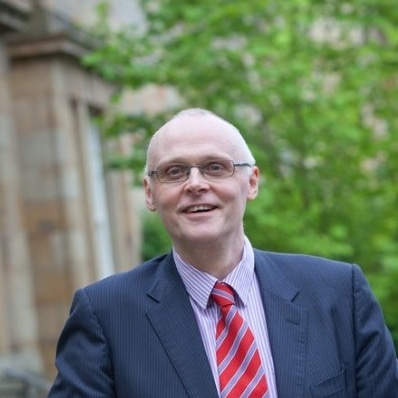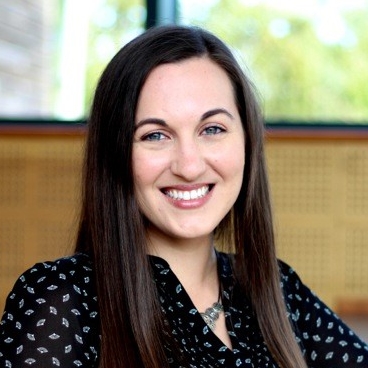The latest set of Office for Students (OfS) expectations on harassment and sexual misconduct do not stray much from their consultation issued in January 2020.
The regulatory remit of OfS includes protecting the interests of students as an objective. But the brutal truth – recognised by the regulator – is that in the case of sexual violence, progress in tackling our problem with sexual violence has been variable.
And “variable” feels like something of a euphemism considering student feedback and ongoing activism asking for universities to even start to address this issue. For example, we understand only four universities in England even publish data on the numbers of cases reported and case outcomes. Hence our claims across the sector of taking sexual violence seriously may well sound shrill to student survivors.
This revised statement does not represent a period of formal consultation. However, OfS will likely to be gauging the response from the sector to this latest set of policy and practice exhortations. What is laid out is not new or asking universities to go above and beyond. In some senses, this may help universities demonstrate meeting these expectations as the bar has been set at an entirely achievable level.
So will we rise to the task as a sector and grasp the opportunity presented in reviewing our progress in this challenging area? Is the OfS statement urging us to do this work enough to create a business case to invest in preventing and responding to sexual violence in our institutions? This seems to us to be an unlikely scenario without regulation behind this and in view of the “variable” responses already seen.
But for those senior management teams and governing bodies who are interested in building on the guidance, we have a number of recommendations which we hope will be helpful.
Above and beyond
First, universities can and should implement the minimum safeguarding recommendations. The statement of expectations from the OfS has a resonance with the recommendations from the “minimum safeguarding practice” highlighted in the evaluation of safeguarding students catalyst fund project. We regard these recommendations as so fundamental that we reproduced them in our book.
If universities want to move beyond the minimum safeguarding work, then we recommend considering embedding the comprehensive institution-wide approach we present in our book which we were delighted to see described as, “practically a “How to Tackle Sexual Violence for Dummies” for SMTs”. It is indeed intended as an accessible resource for staff and students who want to do the work to make a difference at their university.
However, if that is too much, the OfS statement of expectations sat alongside the minimum standards recommendations have the potential to be a solid starting point for meaningful change.
Second, all prevention and response initiatives for sexual violence need to be trauma-informed. We have previously argued that our interventions in support of survivors need to be trauma-informed. This needs to be included in our sexual misconduct policies and processes.
As one starting point of achieving this, policies and practices should reinforce rather than undermine survivor autonomy in decision making. It is important to recognise and capture in our policies that many survivors may simply wish to be heard and supported where requested. Whereas others may want us to undertake an investigation. These should rightly be decisions for survivors. Respect for the decision making of the survivor needs to be a key consideration in all that we do in this challenging area of policy and practice.
Third, investigators and discipline decision-makers need to be trained in conducting trauma-informed investigations and discipline processes for sexual misconduct cases, specifically.
Without this we believe that institutionally we run the risk of undermining lots of good work on encouraging reporting and supporting survivors, re-traumatising survivors and failing to effectively investigate cases of sexual misconduct as understanding trauma and sexual misconduct is critical for investigations.
Prospective students and staff-student relationships
Fourth, universities can share their approach to tackling sexual violence at Open Days. We cannot think of any good reasons why we would not wish to outline our approach to tackling sexual violence when we hold open days for prospective students. There is evidence that full-time students are at the highest risk of being subjected to sexual violence than any other occupation in England & Wales.
And for those concerned with the impact on revenue streams we would argue that there is no evidence that talking about student safety and in particular what is being done to address sexual violence would put anyone off applying to a particular university. For example, when such an approach was trialed at Durham University the following year there were over 1,000 more women applicants than in the previous year.
Fifth, universities can explicitly say whether staff are permitted to have sexual relationships with their students (we recommend the answer should be no). The OfS statement is silent on the issue of whether or not it is ok for a member of staff to have sexual relationships with their students. In view of the power differentials and professional relationship we think that such relationships are completely inappropriate – even abusive.
Governing bodies and executive leadership teams need surely to state clearly their views on this area. The reason for that is because this can send out important messages to the wider university community on the moral compass and culture of the organisation. It can also prevent abuses of power specifically linked to staff sexual misconduct against students.
What’s more important?
Sixth, do not prioritise research prestige over the rights of young women to study in environments free from harassment and sexual misconduct. One way such prioritization may manifest itself is when there is an undue consideration of the research prowess of members of staff when deliberating on actions to take in cases where students have been subjected to sexual violence.
Seventh, encourage survivors to disclose sexual violence so they can access support sooner. We cannot overemphasize the importance of active campaigns to encourage reporting to universities. Reporting can occur at a number of levels. Reports may be anonymous where we neither have the name of the reporting or responding party. Sometimes it may be that we know the name of the reporting party only. On other occasions we may know the name of both parties.
Each of these types of reporting affords us with a different set of opportunities to support students. And there is an area here where we would take a different view to the OfS and that is in connection with the support for responding parties. We would not recommend providing them with support prior to any decision making about whether or not to investigate them for acts of sexual misconduct. For us this process would only commence once an investigation was underway and not before.
Prevalence, partnership and policy review
Eighth, as a sector, we need to actively push for a national prevalence study on sexual misconduct at universities. It is extraordinary that there seems little appetite for a national prevalence study. If we are to have the most effective responses to our problem with sexual violence then we surely need the highest quality of data to inform our judgements and investment decisions. The OfS are well placed to commission such a survey – and the results could also be used, if repeated to measure any progress.
Ninth, create partnerships with the external organisations that work with survivors and perpetrators. This is an area of policy and practice where we need to work with partners from outside our universities. Top of the list of potential partners are colleagues in the NHS, whether based at local Sexual Assault Referral Centres (SARCs) or at local General Practitioner practices. Other partners include local specialist Rape Crisis services. The health and wellbeing of survivors is key to any effective responses. Links with local police can be important too. It may be that if a student is worked with positively when reporting to their university they may be more likely to consider reporting to the police too in some cases.
Finally, review policies and practices now, so changes can be implemented in time for our “new normal” in the 2021/22 academic year. We would urge all university governing bodies to commission reviews of their policies and practices on tackling sexual violence over this Summer with a view to driving up reporting rates, putting support and investigatory capacity in place and undertaking extensive staff and student trauma-informed training. We are all making changes to adapt to the new circumstances of a global pandemic. We get to create our new-normal – if this does not include actively working to prevent and respond to sexual violence within our universities we’ve missed a huge opportunity to make a tangible difference in the lives of students.
We would like to thank all the student activists who have provided the leadership in getting sexual violence on university agendas and keeping it there. Student activists began this work 11 years ago when the first Hidden Marks report was published. Certainly over a decade later, universities can begin to implement the bare minimum to safeguard students even if this is not yet regulated. We surely now need to seize the opportunity to work together to keep our students safe from harassment and sexual violence.














